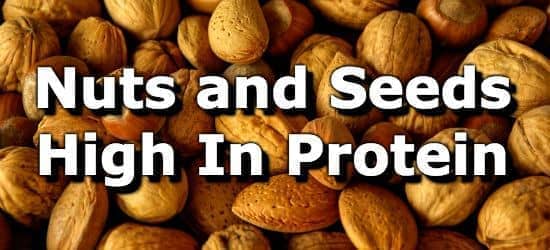20 Cheeses High in Protein

For vegetarians or anyone simply looking to get more protein into their diet, cheese can be a good choice, but which are the healthiest choices?
Here is a list of 20 different kinds of cheese that provide the most protein per ounce (oz) or half cup. An ounce of cheese is approximately equal to a thin slice large enough to cover a piece of toast.
The current daily value (DV) for protein is 50 grams per day. (1) Cheeses high in protein include ricotta, low-fat cottage cheese, Parmesan, Romano, non-fat cheddar, gruyere, low-fat Swiss, fontina, and more.
Many of the cheeses on this list are low-fat or non-fat cheeses. In general, cheeses which are lower in fat will tend to contain more protein per serving. However, this is not always the case, and some of the cheeses on the list have a higher fat content.
For more high protein foods, see the articles on vegetarian protein foods, beans high in protein, grains high in protein, and nuts high in protein.
| Food | Serving | Protein |
|---|---|---|
| #1 Low Fat Cottage Cheese | per 1/2 cup | 24% DV 11.8g |
| #2 Grated Parmesan | per oz | 20% DV 10.2g |
| #3 Ricotta | per 1/2 cup | 19% DV 9.3g |
| #4 Romano | per oz | 18% DV 9g |
| #5 Non-Fat Cheddar | per oz | 18% DV 9g |
| #6 Hard Goat Cheese | per oz | 17% DV 8.7g |
| #7 Gruyere | per oz | 17% DV 8.5g |
| #8 Low-Fat Monterey | per oz | 16% DV 7.9g |
| #9 Swiss Cheese | per oz | 15% DV 7.7g |
| #10 Fontina | per oz | 15% DV 7.3g |
| #11 Provolone | per oz | 15% DV 7.3g |
| #12 Edam | per oz | 14% DV 7.1g |
| #13 Gouda | per oz | 14% DV 7.1g |
| #14 Tilsit | per oz | 14% DV 6.9g |
| #15 Low-Fat Muenster | per oz | 14% DV 6.9g |
| #16 Low-Fat Mozzarella | per oz | 14% DV 6.9g |
| #17 Port De Salut Cheese | per oz | 14% DV 6.8g |
| #18 Colby | per oz | 13% DV 6.7g |
| #19 Blue Cheese | per oz | 12% DV 6.1g |
| #20 Brie | per oz | 12% DV 5.9g |
About the Data
Data for the curated food lists comes from the USDA Food Data Central Repository.
You can check our data against the USDA by clicking the (Source) link at the bottom of each food listing.
Note: When checking data please be sure the serving sizes are the same. In the rare case you find any difference, please contact us and we will fix it right away.
About Nutrient Targets
Setting targets can provide a guide to healthy eating.
Some of the most popular targets include:- Daily Value (%DV) - The daily value (%DV) is a general guideline for consumption that will prevent deficiency of a particular nutrient in most people. The %DV refers to the percentage of an amount that\'s found in a single serving of a food. It also accounts for absorption factors. It is set by the U.S. FDA.
- Recommended Dietary Allowance (%RDA) - The RDA sets an average daily dietary intake level that is sufficient to meet the nutrient requirements of nearly all (97.5%) healthy individuals. It\'s more specific than the daily value, and varies by age and gender. The RDA is set by the US National Institutes of Health.
- Reference Dietary Intake (%RDI) -The reference dietary intake is similar to the recommended daily allowance, but is specific to age and gender. The RDI for amino acids is set by the U.N. World Health Organization.
- Adequate Intake (%AI) - This value is primarily used in reference to omega-3 and omega-6 fats. The Adequate Intake is set by the U.S. Institute of Medicine. Because there is less evidence to determine the ideal targets for consumption of these nutrients, the specific amount is considered to be less reliable. Using the term Adequate Intake, rather than one of the other terms, helps to emphasize that the ideal intake of that particular nutrient has not yet been scientifically determined.
See the Guide to Recommended Daily Intakes for more information.
Want to set your own targets? Sign up for an account and set custom targets in the daily food log.From the Nutrient Ranking Tool
Use the ranking tool links below to select foods and create your own food list to share or print.
- Foods High in Protein
- Foods Low in Protein
- Vegetables High in Protein
- Fruits High in Protein
- Vegetarian Foods High in Protein
- Nuts High in Protein
- Grains High in Protein
- Beans High in Protein
- Dairy High in Protein
- Breakfast Cereals High in Protein
- Fast Foods High in Protein
View more nutrients with the nutrient ranking tool, or see ratios with the nutrient ratio tool.
Related
Data Sources and References
Try the recipe nutrition calculator, or daily meal planner.
Create a free account to log and track foods.


 Next ➞
Next ➞